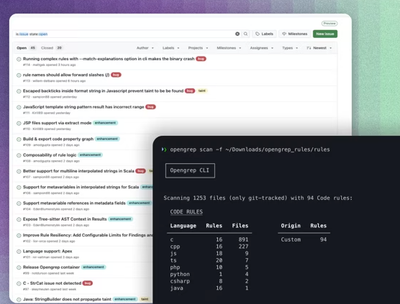
Research
Security News
Lazarus Strikes npm Again with New Wave of Malicious Packages
The Socket Research Team has discovered six new malicious npm packages linked to North Korea’s Lazarus Group, designed to steal credentials and deploy backdoors.
A pure-JavaScript tunnel client for http and https similar to localtunnel.me, but uses TLS (SSL) with ServerName Indication (SNI) over https to work even in harsh network conditions such as in student dorms and behind HOAs, corporate firewalls, public lib
| Sponsored by ppl | tunnel-server.js | tunnel-client.js |
A client that works in combination with stunneld.js to allow you to serve http and https from any computer, anywhere through a secure tunnel.
Installs as stunnel.js with the alias jstunnel
(for those that regularly use stunnel but still like commandline completion).
npm install -g 'git+https://git@git.coolaj86.com/coolaj86/tunnel-client.js.git#v1'
Or if you want to bow down to the kings of the centralized dictator-net:
npm install -g stunnel
The OAuth3.org tunnel service is in Beta.
Terms of Service: The Software and Services shall be used for Good, not Evil. Examples of good: education, business, pleasure. Examples of evil: crime, abuse, extortion.
stunnel.js --agree-tos --email john@example.com --locals http:*:4080,https:*:8443 --device
stunnel.js \
--agree-tos --email <EMAIL> \
--locals <List of <SCHEME>:<EXTERNAL_DOMAINNAME>:<INTERNAL_PORT>> \
--device [HOSTNAME] \
--domains [Comma-separated list of domains to attach to device] \
--oauth3-url <Tunnel Service OAuth3 URL>
How to use stunnel.js with your own instance of stunneld.js:
stunnel.js \
--locals <<external domain name>> \
--stunneld wss://<<tunnel domain>>:<<tunnel port>> \
--secret <<128-bit hex key>>
stunnel.js --locals john.example.com --stunneld wss://tunnel.example.com:443 --secret abc123
stunnel.js \
--locals <<protocol>>:<<external domain name>>:<<local port>> \
--stunneld wss://<<tunnel domain>>:<<tunnel port>> \
--secret <<128-bit hex key>>
stunnel.js \
--locals http:john.example.com:3000,https:john.example.com \
--stunneld wss://tunnel.example.com:443 \
--secret abc123
--secret the same secret used by stunneld (used for authentication)
--locals comma separated list of <proto>:<servername>:<port> to which
incoming http and https should be forwarded
--stunneld the domain or ip address at which you are running stunneld.js
-k, --insecure ignore invalid ssl certificates from stunneld
var stunnel = require('stunnel');
stunnel.connect({
stunneld: 'wss://tunnel.example.com'
, token: '...'
, locals: [
// defaults to sending http to local port 80 and https to local port 443
{ hostname: 'doe.net' }
// sends both http and https to local port 3000 (httpolyglot)
, { protocol: 'https', hostname: 'john.doe.net', port: 3000 }
// send http to local port 4080 and https to local port 8443
, { protocol: 'https', hostname: 'jane.doe.net', port: 4080 }
, { protocol: 'https', hostname: 'jane.doe.net', port: 8443 }
]
, net: require('net')
, insecure: false
});
net and provide a createConnection that returns a stream.Duplex.var tokenData = { domains: [ 'doe.net', 'john.doe.net', 'jane.doe.net' ] }
var secret = 'shhhhh';
var token = jwt.sign(tokenData, secret);
Let's say you want to handle http requests in-process or decrypt https before passing it to the local http handler.
You'll need to create a pair of streams to connect between the local handler and the tunnel handler.
You could do a little magic like this:
stunnel.connect({
// ...
, net: {
createConnection: function (info, cb) {
// data is the hello packet / first chunk
// info = { data, servername, port, host, remoteAddress: { family, address, port } }
var streamPair = require('stream-pair');
// here "reader" means the socket that looks like the connection being accepted
var writer = streamPair.create();
// here "writer" means the remote-looking part of the socket that driving the connection
var reader = writer.other;
// duplex = { write, push, end, events: [ 'readable', 'data', 'error', 'end' ] };
reader.remoteFamily = info.remoteFamily;
reader.remoteAddress = info.remoteAddress;
reader.remotePort = info.remotePort;
// socket.local{Family,Address,Port}
reader.localFamily = 'IPv4';
reader.localAddress = '127.0.01';
reader.localPort = info.port;
httpsServer.emit('connection', reader);
if (cb) {
process.nextTick(cb);
}
return writer;
}
});
FAQs
A pure-JavaScript tunnel client for http and https similar to localtunnel.me, but uses TLS (SSL) with ServerName Indication (SNI) over https to work even in harsh network conditions such as in student dorms and behind HOAs, corporate firewalls, public lib
The npm package stunnel receives a total of 4 weekly downloads. As such, stunnel popularity was classified as not popular.
We found that stunnel demonstrated a not healthy version release cadence and project activity because the last version was released a year ago. It has 1 open source maintainer collaborating on the project.
Did you know?

Socket for GitHub automatically highlights issues in each pull request and monitors the health of all your open source dependencies. Discover the contents of your packages and block harmful activity before you install or update your dependencies.

Research
Security News
The Socket Research Team has discovered six new malicious npm packages linked to North Korea’s Lazarus Group, designed to steal credentials and deploy backdoors.

Security News
Socket CEO Feross Aboukhadijeh discusses the open web, open source security, and how Socket tackles software supply chain attacks on The Pair Program podcast.

Security News
Opengrep continues building momentum with the alpha release of its Playground tool, demonstrating the project's rapid evolution just two months after its initial launch.